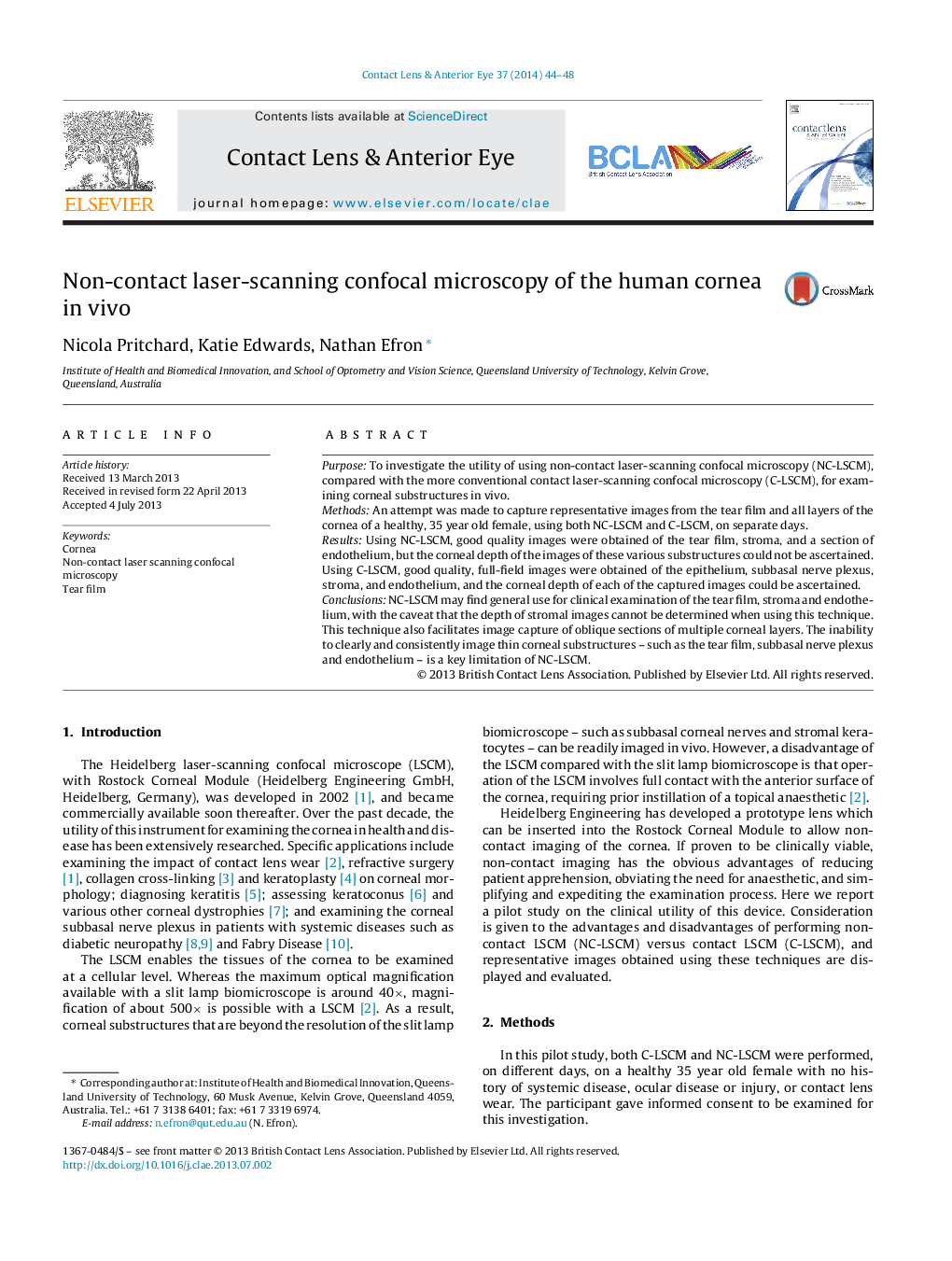| Article ID | Journal | Published Year | Pages | File Type |
|---|---|---|---|---|
| 2699224 | Contact Lens and Anterior Eye | 2014 | 5 Pages |
PurposeTo investigate the utility of using non-contact laser-scanning confocal microscopy (NC-LSCM), compared with the more conventional contact laser-scanning confocal microscopy (C-LSCM), for examining corneal substructures in vivo.MethodsAn attempt was made to capture representative images from the tear film and all layers of the cornea of a healthy, 35 year old female, using both NC-LSCM and C-LSCM, on separate days.ResultsUsing NC-LSCM, good quality images were obtained of the tear film, stroma, and a section of endothelium, but the corneal depth of the images of these various substructures could not be ascertained. Using C-LSCM, good quality, full-field images were obtained of the epithelium, subbasal nerve plexus, stroma, and endothelium, and the corneal depth of each of the captured images could be ascertained.ConclusionsNC-LSCM may find general use for clinical examination of the tear film, stroma and endothelium, with the caveat that the depth of stromal images cannot be determined when using this technique. This technique also facilitates image capture of oblique sections of multiple corneal layers. The inability to clearly and consistently image thin corneal substructures – such as the tear film, subbasal nerve plexus and endothelium – is a key limitation of NC-LSCM.
